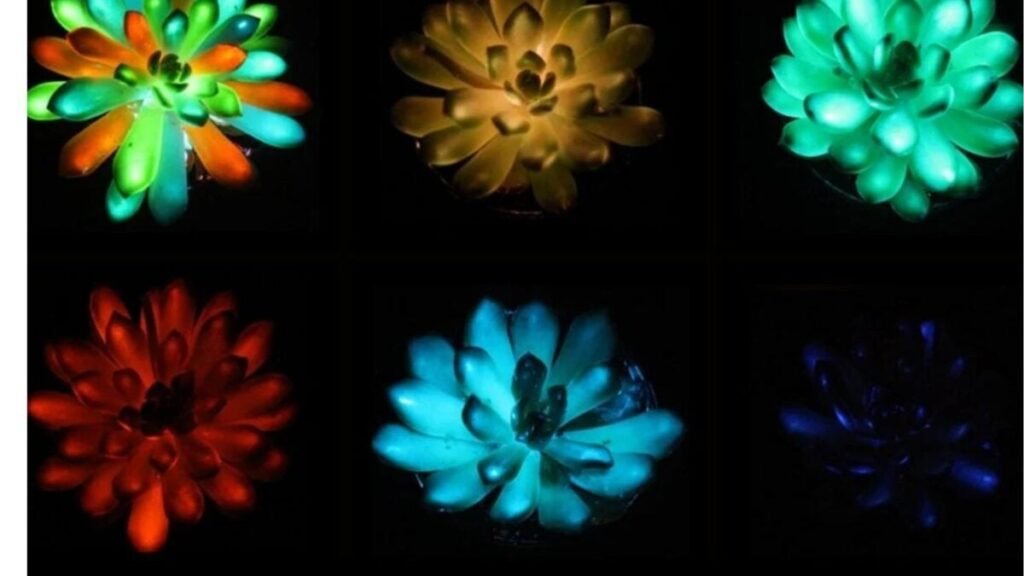“When Night Comes Alive: The Trend of Plants That Glow in the Dark”

In an experiment, a few succulents light up under a soft glow, casting blue, green, and red hues. It feels like a scene from a sci-fi story, but it’s actually a technology merging biology and phosphorescent materials. Could glowing plants be a future alternative to electricity?
The microscopic secret behind the glow
The glow comes from tiny phosphorus particles injected into the leaves. These particles absorb light during the day and slowly release it at night, creating a phosphorescent effect. The key is size – scientists found that 7 micrometers is the perfect measurement: big enough to shine, yet small enough to move through plant tissues smoothly.
From test tubes to a luminous wall
The experiment expanded beyond one pot as researchers grouped plants to form a glowing wall. The end result was a living mural that provided enough light for reading up close. What surprised everyone was the simplicity and low cost – each plant only needed about ten minutes to prepare and cost around one euro and a half in materials. An affordable technology that, if scaled, could have various applications like sustainable gardens or urban decor.
Enthusiasm and caution towards an uncertain future
This development offers sustainable lighting options, but questions remain. The light intensity diminishes over time, and the impact on plants is unknown. It’s also uncertain if the technique can be applied to larger species with more decorative or urban significance. Researchers stress that the integration of inorganic micromaterials into living organisms without altering their DNA is crucial. This could pave the way for a biointegration future, where biology and technology converge to reduce energy consumption and reshape the relationship between nature and sustainability. For now, glowing plants represent a captivating promise, a glimpse into a future where nights are illuminated by life itself.






